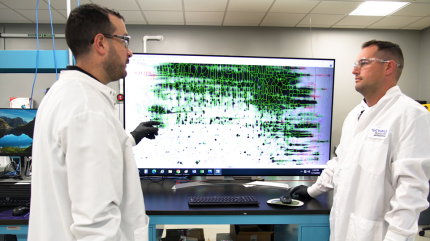
Times are tough in the biopharmaceutical industry. Challenges including regulatory hurdles, supply chain fragility, geopolitical tensions and macroeconomic pressures are reshaping how the sector operates. It is unclear which firms will sink and which will swim.
Where can researchers look for a beacon of hope? Emerging technologies, advanced therapies and a plethora of innovative solutions to once-intractable problems are hitting the market, suggesting there is light at the end of the tunnel. Harnessing these new solutions can position researchers and biomanufacturers to drive sustainable growth amid adversity. But familiarity with how they have reached this precarious point and the trends shaping industry instability is a crucial precursor.
Precarity reigns for biopharmaceutical businesses
What are the key challenges confronting biopharmaceutical firms? The industry has seen remarkable progress in personalized medicine, immuno-oncology and cell and gene therapies (CGTs), with GlobalData projections suggesting the market for mRNA-based oncology treatments alone will surpass $2 billion in value by 2028. But with the intense pace of innovation has come intensified scrutiny. Over the past three years, the US FDA has halted more than 20 gene therapy trials due to safety concerns. A climate of caution is increasingly being reflected in investor sentiment. CGT investments have dropped sharply; private companies with lead CGT drugs witnessed a 28% decline in year-to-date deal value and volume for 2024 compared to 2023 – a fall worth 40% compared to the heights of 2021.
Financial contraction has coincided with raised global geopolitical risks and regulatory pressures. New provisions in the Inflation Reduction Act for government drug price negotiations threaten to reduce pharmaceutical revenues in the US, using them to foot the bill for expansion in Medicare and Medicaid funding. EU markets are continuing to grapple with the fallout from inflation-driven operating costs. Many of the bloc’s former pharmaceutical hotspots are reporting significant drug shortages, driven by rigid pricing systems and stubbornly high costs of active pharmaceutical ingredients (APIs).
“Since 2023, the pharmaceutical industry operating in Europe has faced an unprecedented challenge related to drug shortages,” comments Alex Watt MSc, Management Analyst at GlobalData. “Previously, shortages were dictated by production capacity and changing market conditions. However, the largely inflationary-driven negative impact on pharmaceutical developers seen in 2023 has continued into 2024 as manufacturers battle with high operating costs while governments continue to curb price growth through cost-containment policies.”
Additionally, global supply chains, strained by dependencies on Chinese manufacturing, have emerged as a critical weak point for pharma firms. EU Pharmaceutical Reform and the US BIOSECURE Act aim to bolster domestic production and increase access to APIs in domestic markets. But this in turn could ramp up pre-existing instabilities; in a survey of pharma business decision makers for GlobalData’s State of the Biopharmaceutical Industry 2024 report, 24% of respondents cited geopolitical tensions as the most impactful negative trend for the coming year. Addressing these vulnerabilities remains a formidable challenge.
And there is additional political uncertainty to consider. As Alison Labya MSc, Business Fundamentals Analyst at GlobalData, points out, Donald Trump’s election in 2024 introduces new unknowns that pharma firms will need to deal with. His promises to raise import tariffs could have massive knock-on consequences for pharmaceutical margins: “it remains to be seen how Trump will address the potential increased operational costs and subsequent drug price increases associated with a shift towards US manufacturing,” she says. Trump’s return also raises questions around the future of regulatory oversight and industry dynamics. His appointment of Robert F. Kennedy Jr. – known for his anti-vaccine stance and criticism of the FDA – as the head of the US Department of Health may send shockwaves across the legislative landscape. Drug approvals, investor confidence and innovation within the sector could all be affected.
Where to look for signs of optimism
There are clearly hurdles confronting pharmaceutical firms’ progress over the coming years. But there are also promising advancements in technology and new therapeutic areas. Anti-obesity drugs, particularly glucagon-like peptide-1 receptor agonists (GLP-1RAs), are revolutionizing treatment paradigms. Estimated by GlobalData to generate $125.3 billion in sales by 2033, with 90% attributed to obesity therapies, these medications exemplify how unmet medical needs can spur growth.
Artificial intelligence (AI) and big data are also reshaping biopharmaceutical operations. By 2028, the industry is expected to spend over $407 million annually on AI platforms, reflecting a compound annual growth rate (CAGR) of 24.1%. AI applications in biopharmaceuticals span drug discovery, clinical trials and manufacturing, – creating faster, more precise development pipelines than ever before.
And even amid pressing financial constraints, the expansion of mRNA technologies beyond Covid-19 shows more major innovations are on the way. With 85 vaccines currently in late-stage development for infectious diseases, mRNA platforms promise to transform public health. Similarly, real-world evidence and precision medicine are unlocking insights that refine treatment efficacy and safety, heralding a future of tailored therapeutics.
Building resilience amid adversity
How can pharma firms avoid the pitfalls before them and beat a path to a rosier future that seems just out of reach? It is critical they optimize every aspect of their operations, from research to clinical trials to qualification processes, to keep afloat in a complex environment. Cutting-edge tools and assay support can enable biomanufacturers to maintain rigorous process integrity, navigate novel requirements and bring safe, effective therapies to market.
Working with an expert partner with decades of experience in getting therapies from initial trials all the way to patients can make this easier. From the outset of a new therapy’s development – the journey from preclinical research to Phase 1 clinical trials – meticulous impurity monitoring is imperative. Cygnus Technologies, an industry leader in bioprocessing impurity analysis, excels in providing high-sensitivity analytical methods to ensure drug purity. Their work exemplified how, by identifying and mitigating impurities early, researchers can optimize downstream purification processes, accelerating timelines without compromising safety.
During Phases 1 and 2 of clinical manufacturing, Cygnus’ Host Cell Protein (HCP) ELISA tools are the gold standard in impurity detection methods. Regulatory agencies mandate robust qualification processes, including dilutional linearity, precision and antibody coverage analysis. Cygnus’ Antibody Affinity Extraction (AAE™) method offers unbeatable sensitivity and specificity, addressing the limitations of traditional techniques like 2D Western blotting. This ensures that assays meet regulatory expectations and maintain consistency across batches. Deploying the expertise of a partner like Cygnus can offer much-needed reassurance at a time of unpredictability around future regulatory terrain.
As therapies progress to Phase 3 and Biologics License Application (BLA) submissions, assay validation becomes imperative. Cygnus supports this transition too, offering custom, process-specific impurity detection assays. These assays undergo rigorous validation to ensure reliability across manufacturing sites and process changes, safeguarding product quality and patient safety.
Scaling up production can alter HCP profiles. Adjustments to purification processes are often necessary. Cygnus’ AAE-MS™ orthogonal methods identify individual HCPs that may compromise product stability or efficacy; by combining mass spectrometry with traditional ELISAs, Cygnus offers actionable insights to refine manufacturing processes and prevent disruptions.
The biopharmaceutical sector may be in a state of flux. But by rolling out the latest innovations in development pipelines and working with the right partners, firms across the industry ride it out. Regulatory pressures, geopolitical uncertainties, supply chain fragility and other disruptions pose formidable challenges, but they always have done; optimizing the road to market can help biopharmaceutical businesses stand out from their competitors and lay the foundations for a more stable future. To find out more about biopharmaceutical innovation in the current climate, how Cygnus is guiding firms across the sector through turbulent times and how it could help you too, download the whitepaper on this page.


